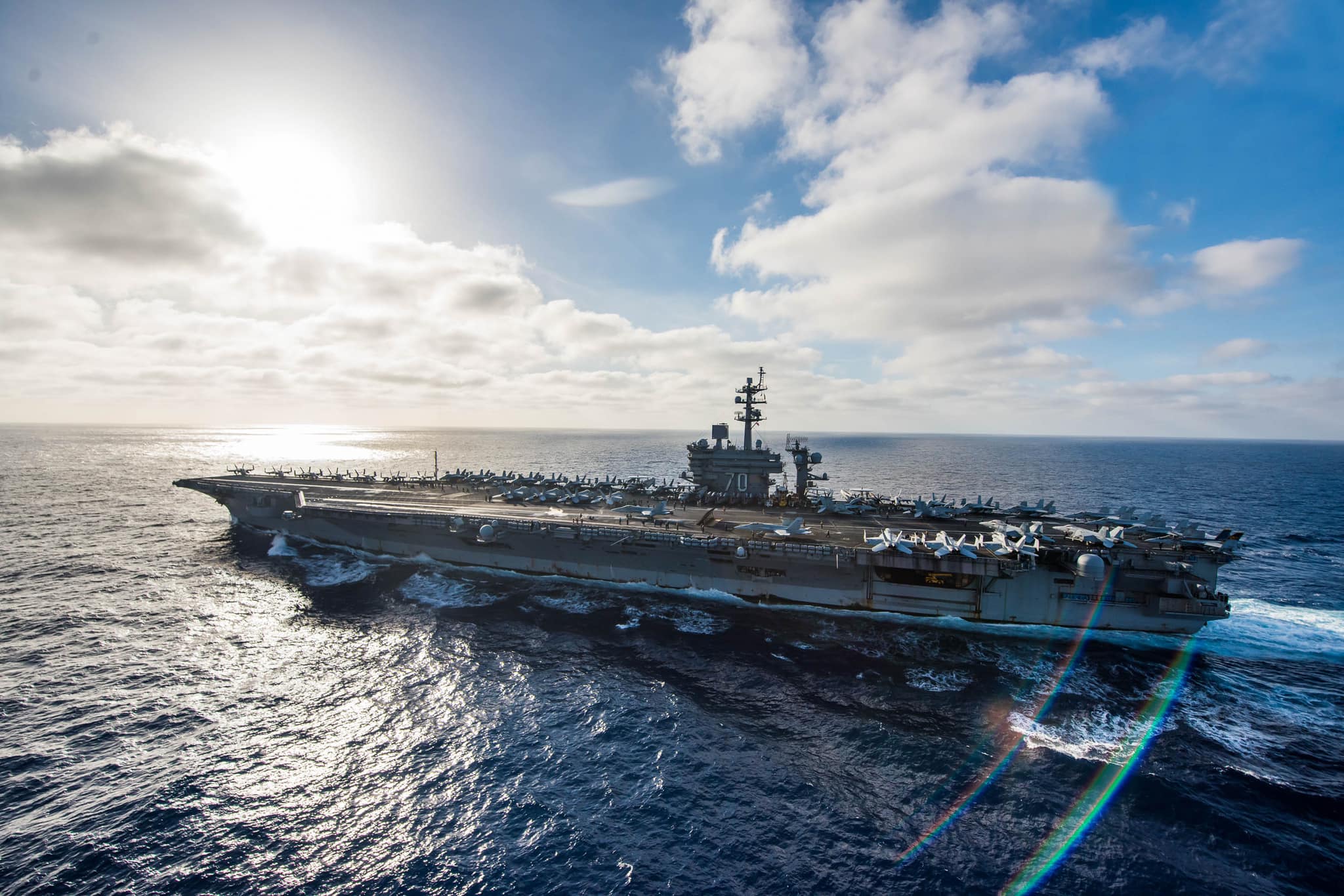N. Korea Threatens Response Amidst Supercarrier Arrival In S. Korea And Joint Drills
NORTH Korea has condemned the arrival of the United States Navy’s nuclear-powered aircraft carrier–the USS Carl Vinson at a South Korean naval base in Busan. In what was characterised as the US showing “its most hostile and confrontational will”. The statement came from Kim Yo Jong, the North’s member of State Affairs Commission and sister of the nation’s leader, Kim Jong Un.
The statement read, “The Democratic People’s Republic of Korea (DPRK) is also planning to carefully examine the option for increasing the actions threatening the security of the enemy at the strategic level to cope with the fact that the deployment of U.S. strategic assets in the Korean Peninsula has become a vicious habit and adversely affects the security of the DPRK.”
The Carl Vinson and its strike group arrived in Busan to display the strengthening ties between the US and South Korea in light of persistent threats from the North. Prior to this visit, the last US Navy aircraft carrier visit to the country happened last June. Additionally, the Carl Vinson arrives just days after North Korea’s test firing of strategic cruise missiles under Kim Jong Un’s supervision, the fourth such missile test to date.
The supreme leader then ordered full readiness of nuclear attack capabilities, with the state media agency Korean Central News Agency (KCNA) quoting him, the test aimed to warn “enemies, who are seriously violating the security environment of the (country) and fostering and escalating the confrontation environment” and to demonstrate “readiness of its various nuke operation means. What is guaranteed by powerful striking ability is the most perfect deterrence and defence capacity. It is the responsible mission and duty of the DPRK’s nuclear armed forces to permanently defend the national sovereignty and security with the reliable nuclear shield by getting more thorough battle readiness of nuclear force and full preparedness for their use.”
Late last month, Kim called to build a strong and modern army that can cope with any war during visits to military academies in the capital of Pyongyang. Meanwhile, South Korean intelligence officials reported that North Korea reportedly sent over a thousand more troops to Russia in January and February on top of the estimated 11,000 already in Russia. Ukrainian officials estimated that North Korean forces suffered up to 4,000 casualties since October.
As the joint South Korean-US Freedom Shield exercise kicks off, the North’s KCNA said, “The enemy states will have to pay dearly for their foolish and reckless war drills, which will lead to a self-defensive, fair, and square, threatening, toughest response from North Korea.” At this time of elevated tension, the drills encountered an unprecedented setback.
On March 6, two Republic of Korea Air Force (ROKAF) KF-16 fighters participating in the live-fire portion of the joint ROK-US Freedom Shield exercises mistakenly dropped a total of eight Mk-82 unguided bombs on the South border town of Pocheon. Around 29 people were injured with damages to several buildings in the town. Following that, live-fire drills in Exercise Freedom Shield were suspended pending a thorough investigation. The incident is the ROKAF’s first accidental bombing resulting in injuries.-shp/adj/dl (Pix:DVIDS)


